
NATURE OF COSTA RICA 2019
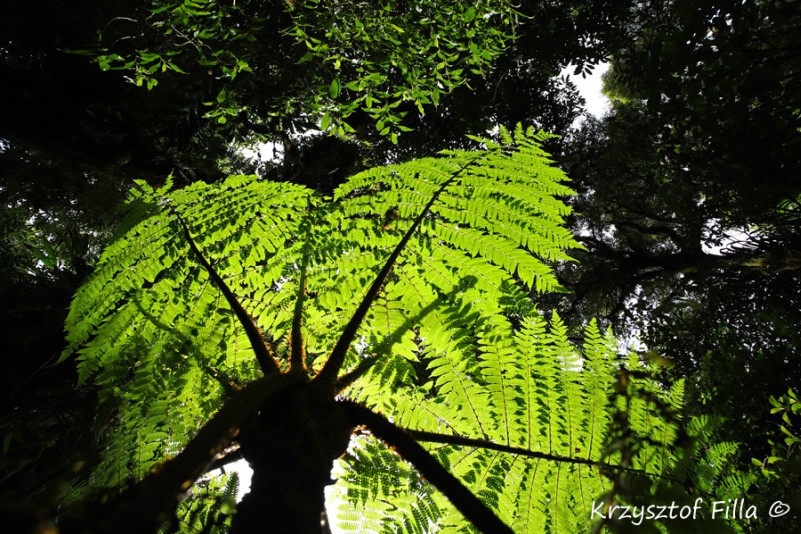
Ferns are particular abundant at higher elevations. Some of them can grow long trunks so they look like trees.
^ ^^^
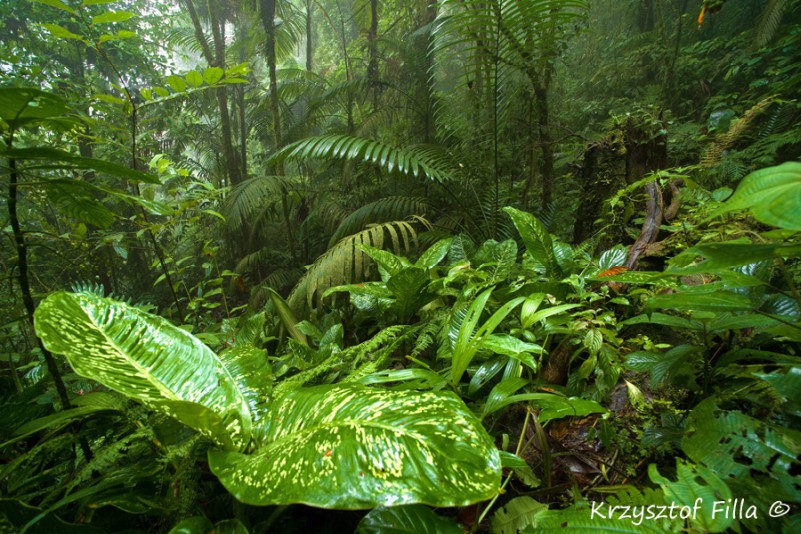
Cloud forests occur on hilly and mountainous areas, which create a barrier for moving clouds. The concentration of clouds along with the process of transpiration generate copious precipitation over the forest. The persisting clouds and fogs have influence on the lash vegetation of those forests, which abound in epiphytes – plants that grow on other plants.
^ ^^^
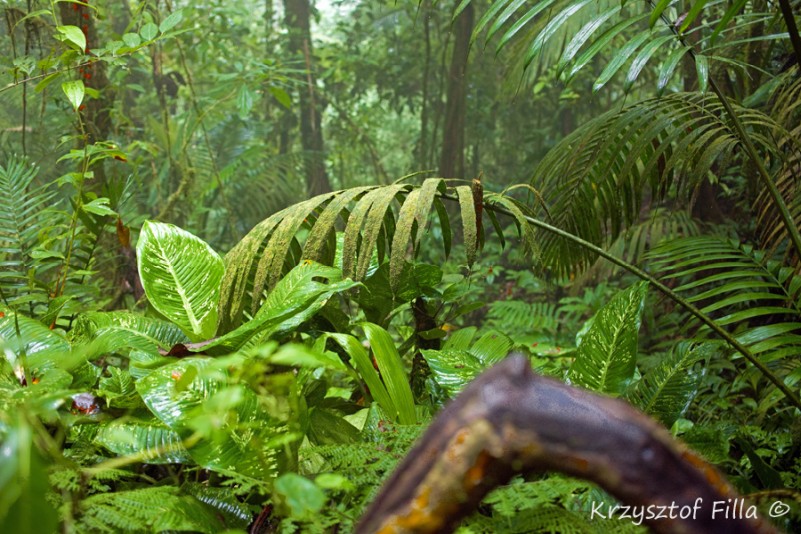
^ ^^^
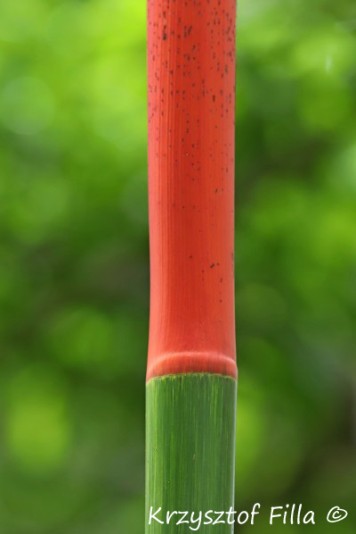
^ ^^^
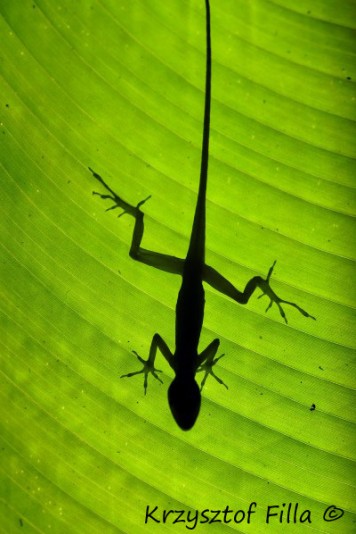
^ ^^^

The Neotropical green anole (Anolis biporcatus). The lizard exists in Central America. It leads arboreal life style. Sometimes it is nicknamed an American Chameleon, because it can change the hue of its skin when disturbed or due to a temperature.
^ ^^^
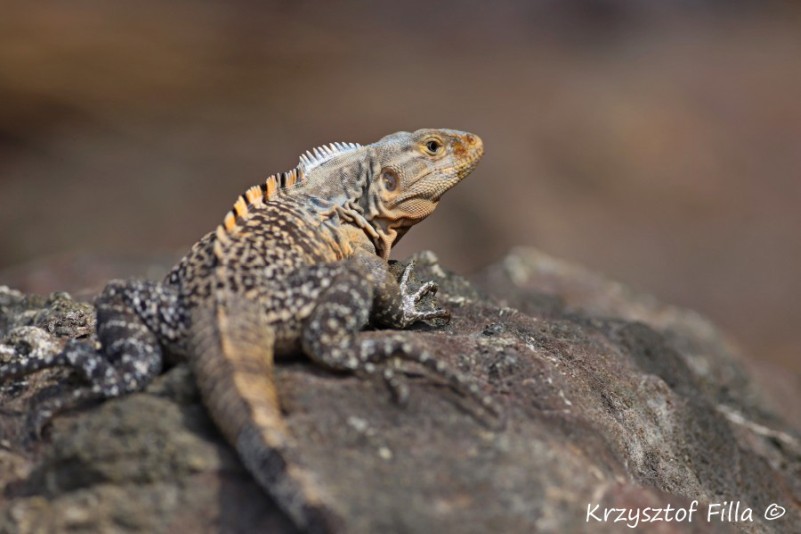
^ ^^^
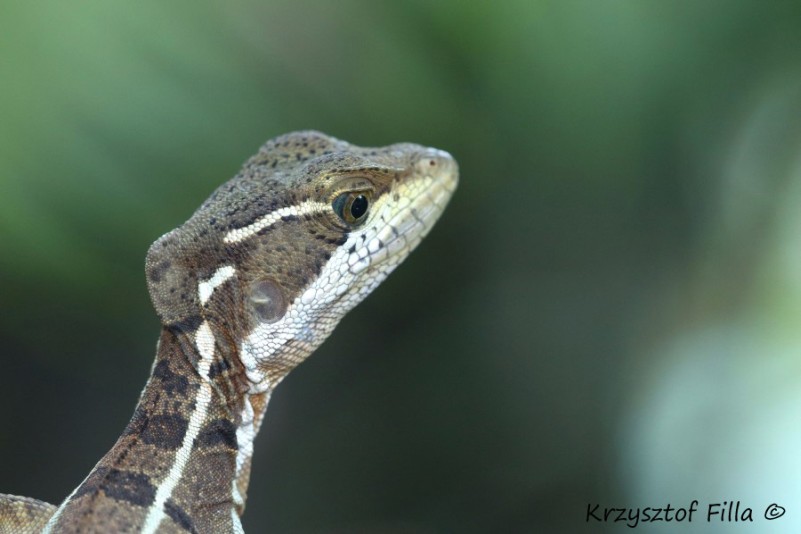
A female of the common basilisk (Basiliscus basiliscus).
^ ^^^

At night time, basilisks snooze attentively at the end of branches and in case of a hazard they drop down.
^ ^^^

The fiery-billed aracari (Pteroglossus frantzii) is a rare species among toucans. It breeds only on the Pacific slopes Costa Rica and West-North Panama mainly on the lowland forest. However this picture has been taken in the mountains on altitude 1300 m. a.s.l. Its diet consist mainly of fruits but it supplements it with insects small lizards or eggs of other birds.
^ ^^^
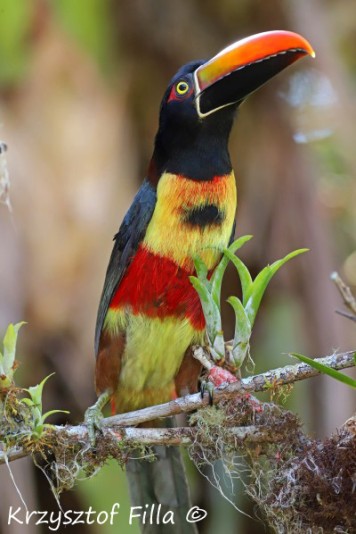
The fiery-billed aracari (Pteroglossus frantzii) is a rare species among toucans. It breeds only on the Pacific slopes Costa Rica and West-North Panama mainly on the lowland forest. However this picture has been taken in the mountains on altitude 1300 m. a.s.l. Its diet consist mainly of fruits but it supplements it with insects small lizards or eggs of other birds.
^ ^^^
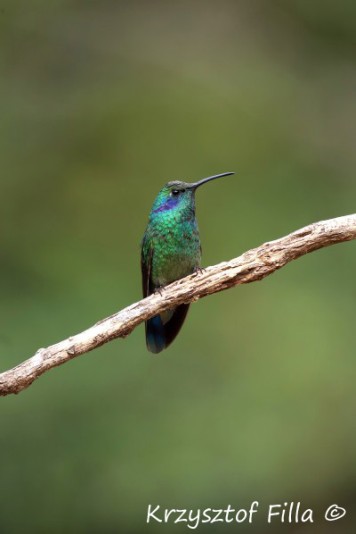
The lesser violetear (Colibri cyanotus).
^ ^^^

^ ^^^
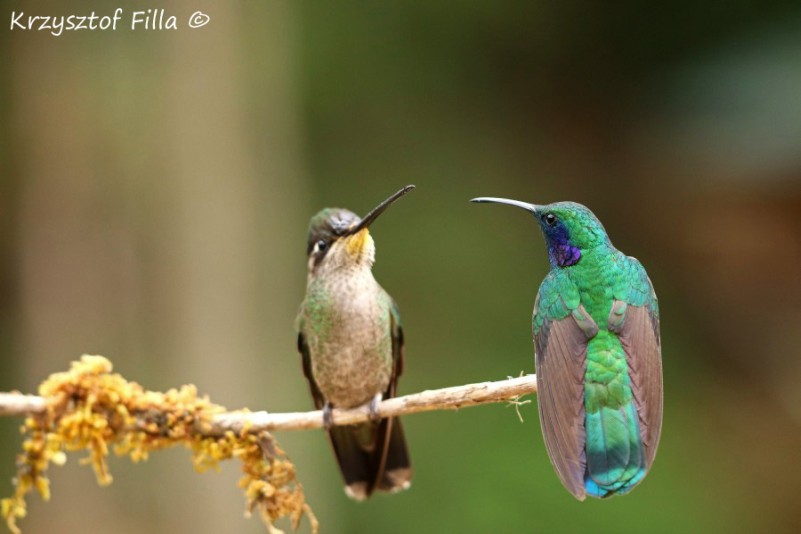
The bird on the right side is a hummingbird - The lesser violetear (Colibri cyanotus).
^ ^^^
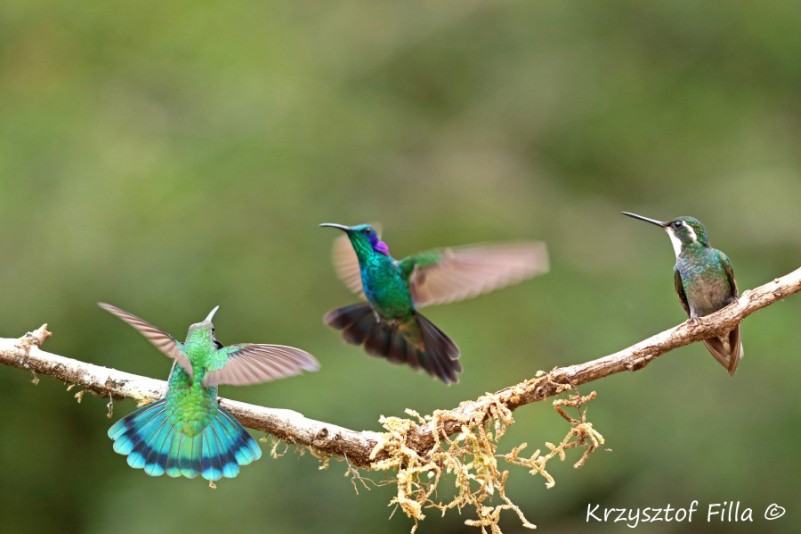
The first two hummingbirds belong to the species of lesser violetear (Colibri cyanotus). It occurs in Central America and the Northern Andes between 1200 and 2300 m. a.s.l. Their favorite environment is the cloud forest. They are the fastest flying hummingbirds achieving speed up to 140 km/h. Their plumage is greenish with blue hue. Its distinctive characteristic are the purple patches near their ears which they can stick out when squabbling with other opponents. The hummingbird on the right side is the white-throated mountaingem (Lampornis castaneoventris). It is endemic to a narrow mountain range above 1800 m. between Costa Rica and Panama.
^ ^^^
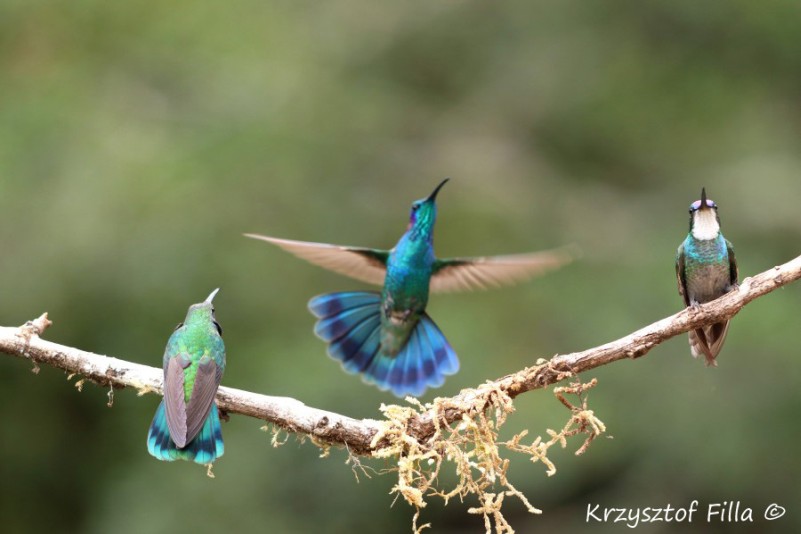
^ ^^^

The golden-hooded tanager (Stilpnia larvata). This little (13 cm.) attractive bird can be seen from South Mexico down to the East of Columbia and partly east Ecuador. It occurs in dense forest to gardens from see level to 1500 m. a.s.l.
^ ^^^
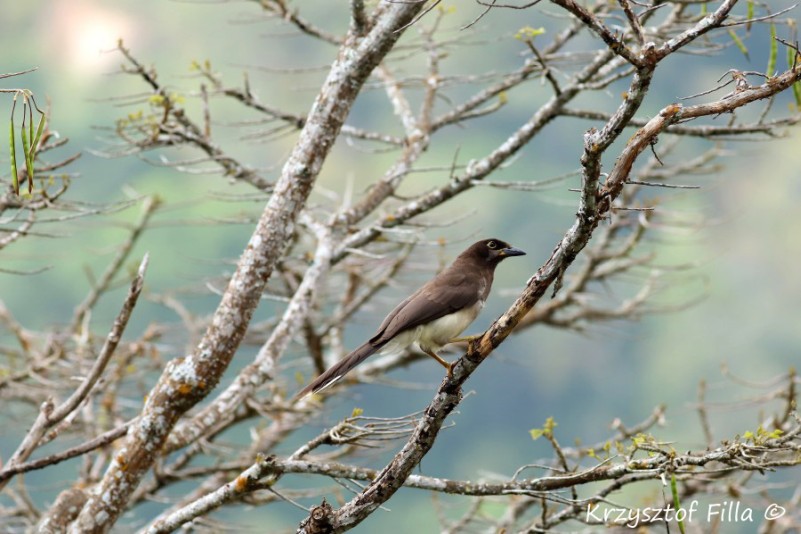
^ ^^^
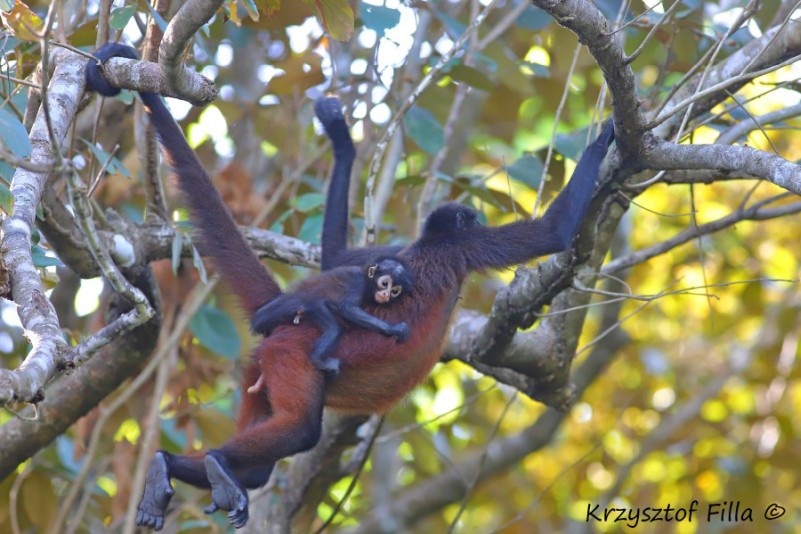
Central American spider monkey (Ateles geoffroyi). One of the distinctive features of these monkeys is their long and strong tail that they use as another limb when moving in the tree canopy. This extra limb makes their movements appear like a spider. Females giving birth to only one offspring every two to four years.
^ ^^^
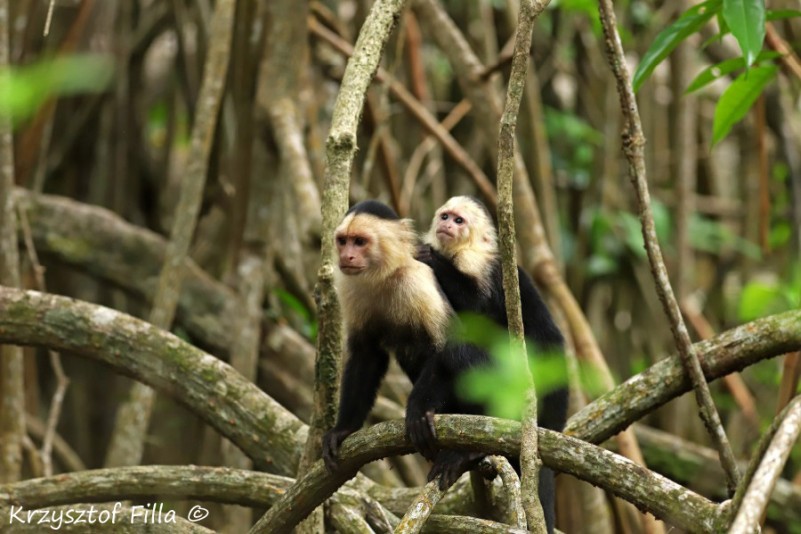
The white-faced capuchin (Cebus imitator). The name capucin derives from the order of monks called minor capuchin who shaved the top of their head and wore a small round cap (zuchetto). After apes, capuchins stand out with their remarkable intelligence among primates. They are known for tools, rubbing into their fur some plants in order to prevent parasites and fungi. Capuchins like most primates are important seed dispersers. They also fulfill the function of pollinators to some plants when they lick nectar or pollen. They live in groups of up to 20 individuals building advanced social structures. Their life span is about 50 years. Their intelligence is one reason of using them by humans in entertainment industry and scientific experiments.
^ ^^^
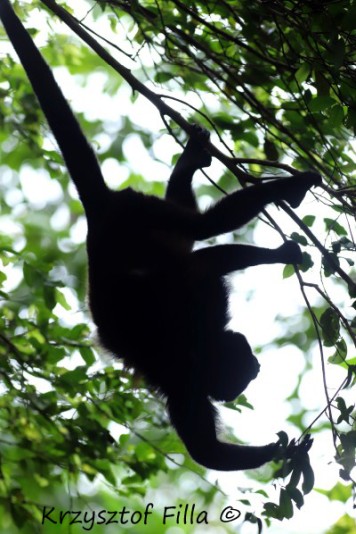
Central American spider monkey (Ateles geoffroyi).
^ ^^^
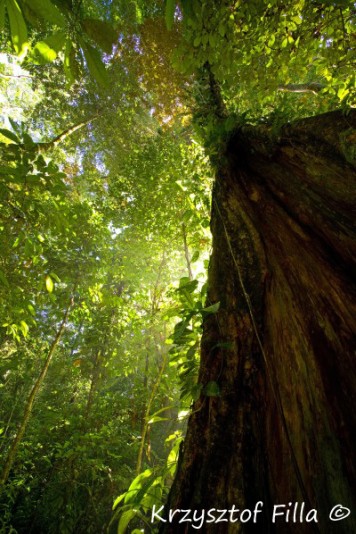
^ ^^^
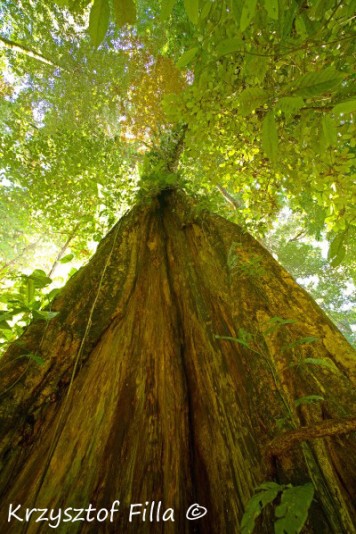
^ ^^^

The python millipede or large forest-floor millipede (Nyssodesmus python). Their role is to munch decaying wood, therefore they are often seen by fallen logs or trunks. They prefer very humid and dark habitat.
^ ^^^
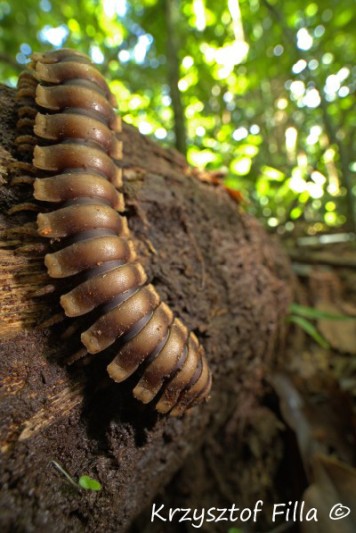
Millipedes are often mistaken with centipedes, which are predators and their bite can be painful. Millipeds feed only on plant matter (sometimes musrooms) for this reason they have no venom and harmless for humans.
^ ^^^
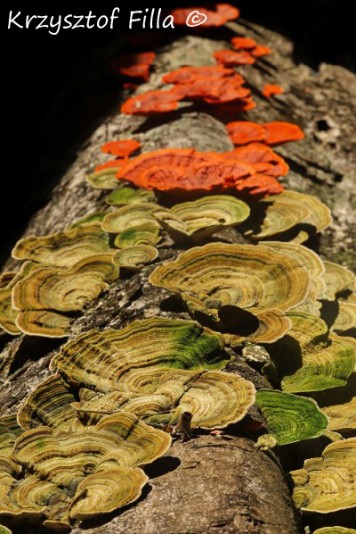
^ ^^^

Ganoderma, a type of mushroom growing in tropical zone mainly on decaying woods.
^ ^^^
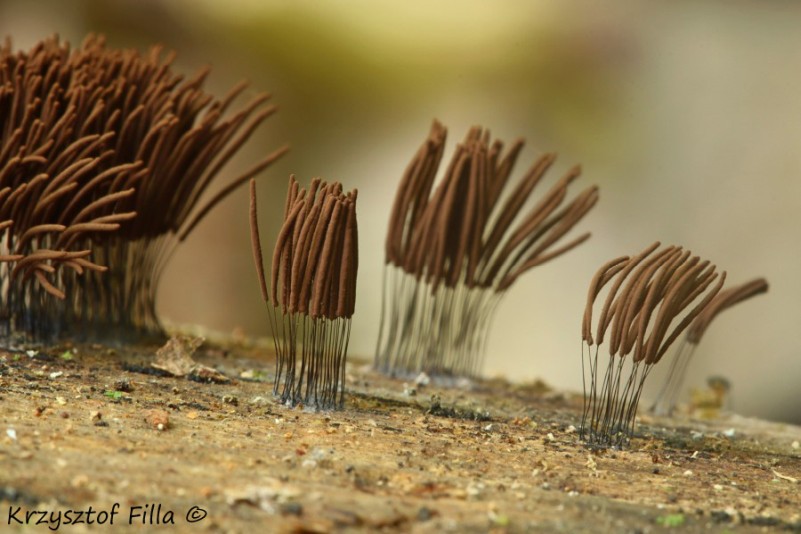
The chocolate tube slime (Stemonitis splendens).
^ ^^^
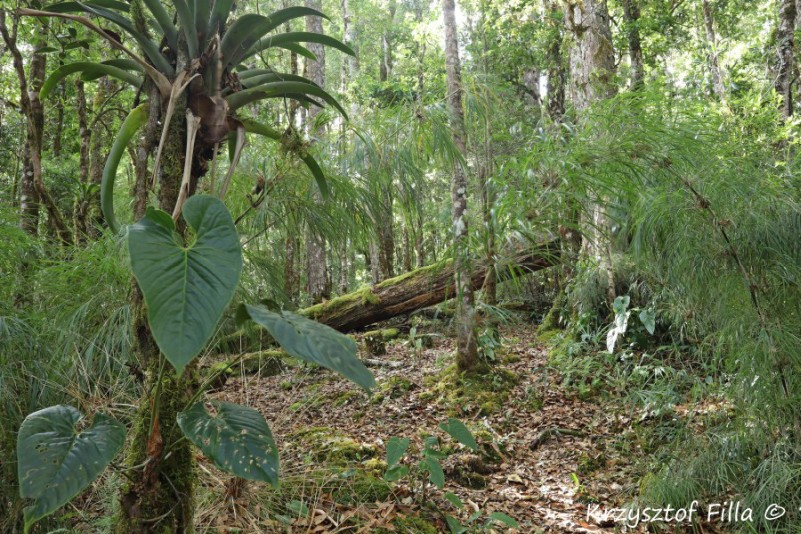
Cloud forest at an altitude 2800 m.
^ ^^^
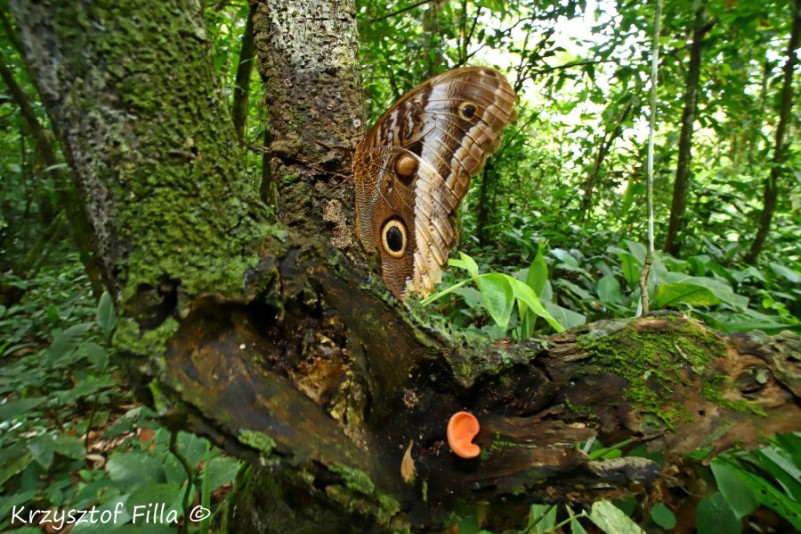
^ ^^^
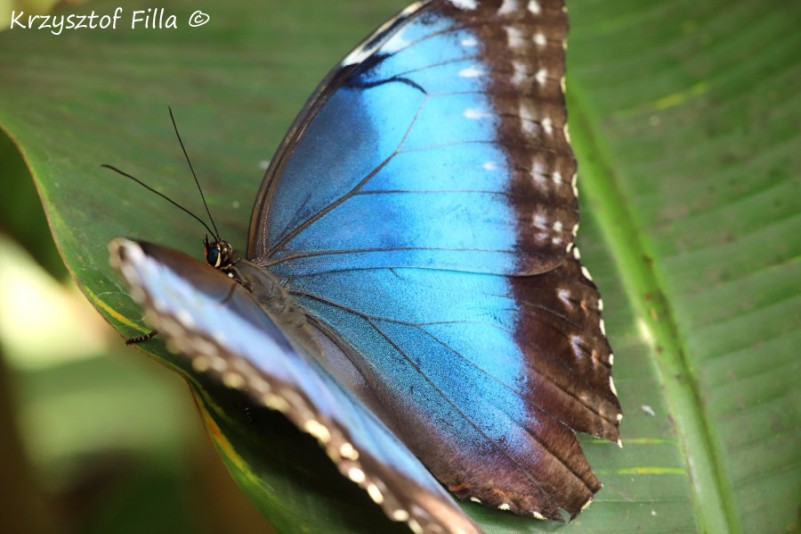
The blue mortho butterfly is the jewel of neotropical forests with the wingspan about 14 cm. When flying mostly in the lowest layer of the forest they flash their iridescent blue colour. When sitting they fold their wigs just seconds after landing, for this reason I had to exercise my patience in photographing their blue charm. In flight they are not very agile so it is easy to catch them. As always their beauty is their curse because people catch them for collectors around the world and their wings are used for decorations. The other side of their wings is dull and mostly brown so hey can camouflage themselves on bark.
^ ^^^
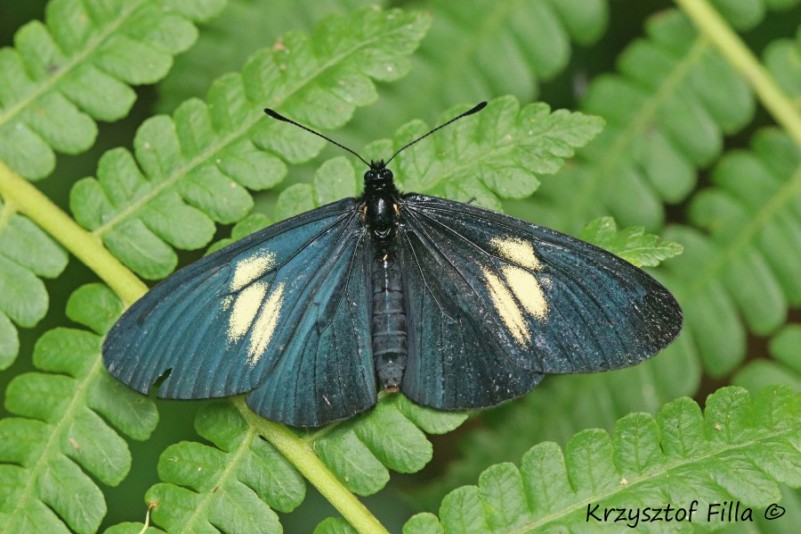
^ ^^^
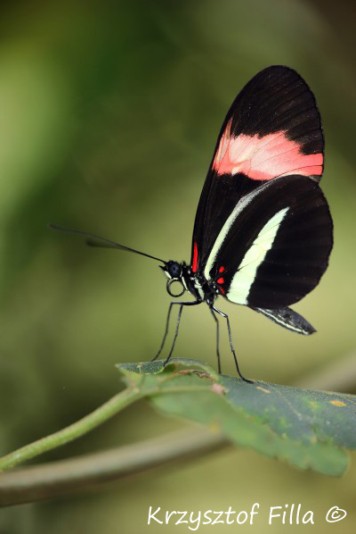
The red postman (Heliconius erato petiverana).
^ ^^^
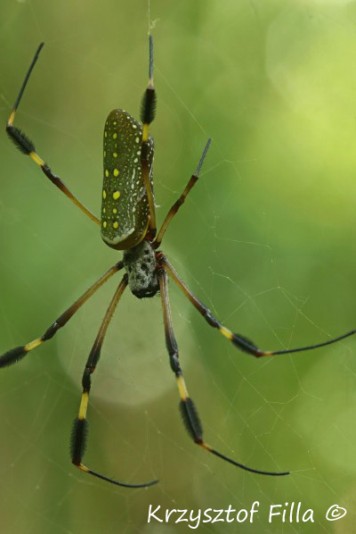
The golden silk orb-weaver, golden silk spider (Nephila clavipes).
^ ^^^
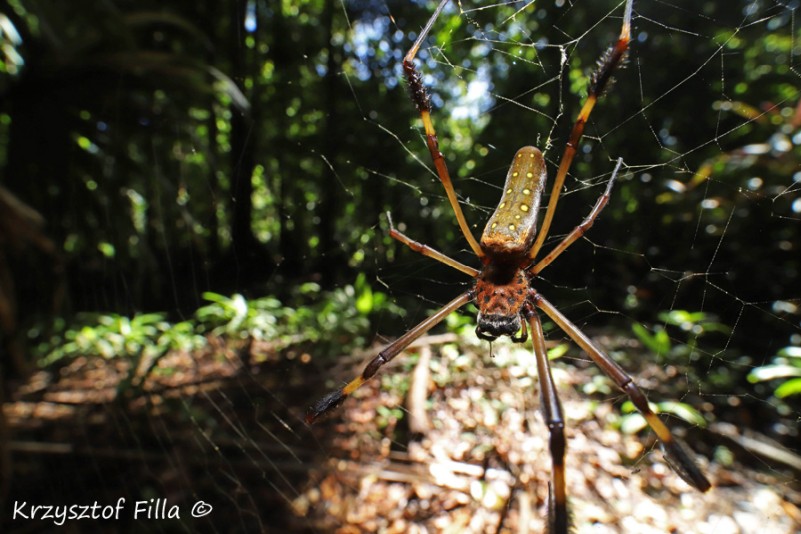
The golden silk orb-weaver, golden silk spider (Nephila clavipes). It is the largest spider that builds spider-nets. Adults add golden pigment to the cobwebs that can be over one meter in diameter. They show distinctive sexual dimorphism (the difference between male and female). The males are usually red and reach maximum size 2.5 cm. in contrast to females that can measure about 10 cm.
^ ^^^

Tarantulas live on all continents except Antarctica but majority live in the tropics. These mostly large and hairy spiders do not build cobwebs. They stay inside their holes during a day and hunt at nighttime. Some of them can put a few thin threads outside their hole that when touched by a potential prey the spider can attack it. They mostly feed insects such as crickets or cockroaches.
^ ^^^

Rainforest Canopy Crab (aka Tree-climbing Crab) I always associated crabs with sea and shores. It has been a surprice to me to see them even in mountains at elevation about 1600 m. a.s.l.
^ ^^^
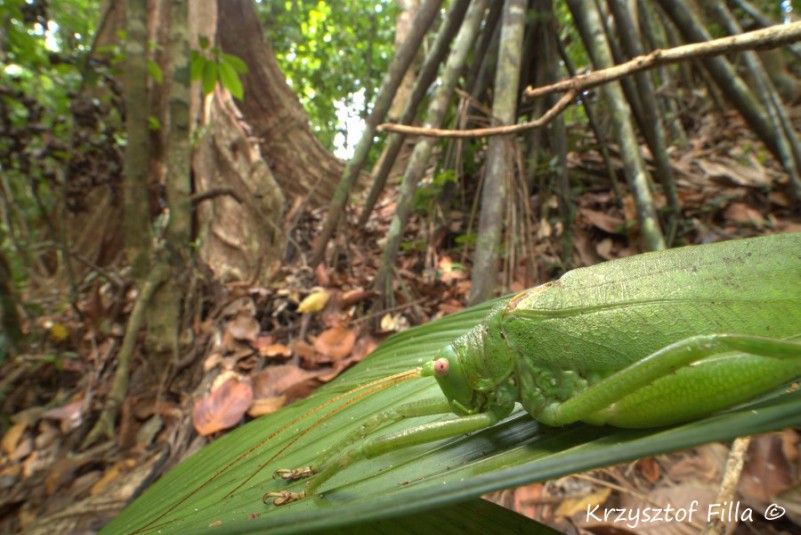
^ ^^^
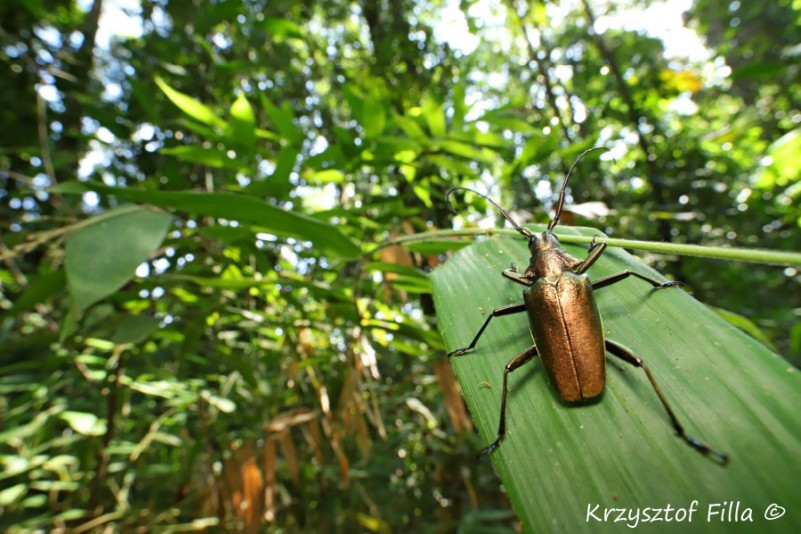
^ ^^^
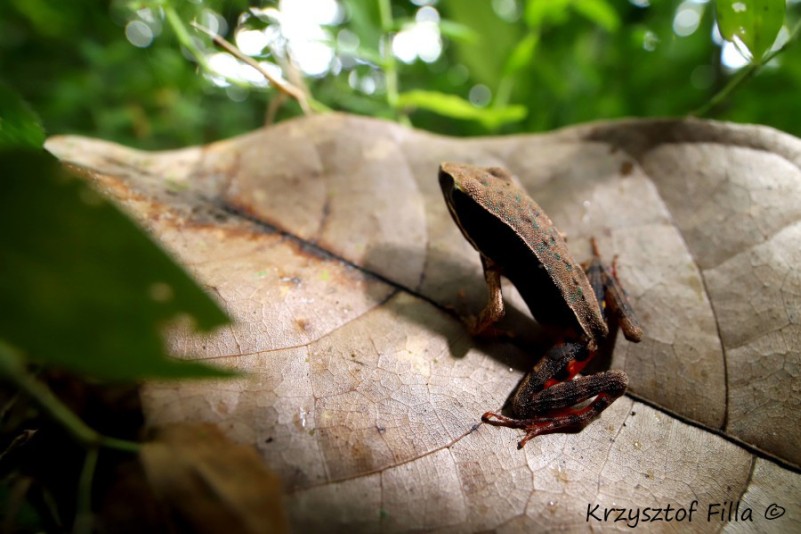
^ ^^^
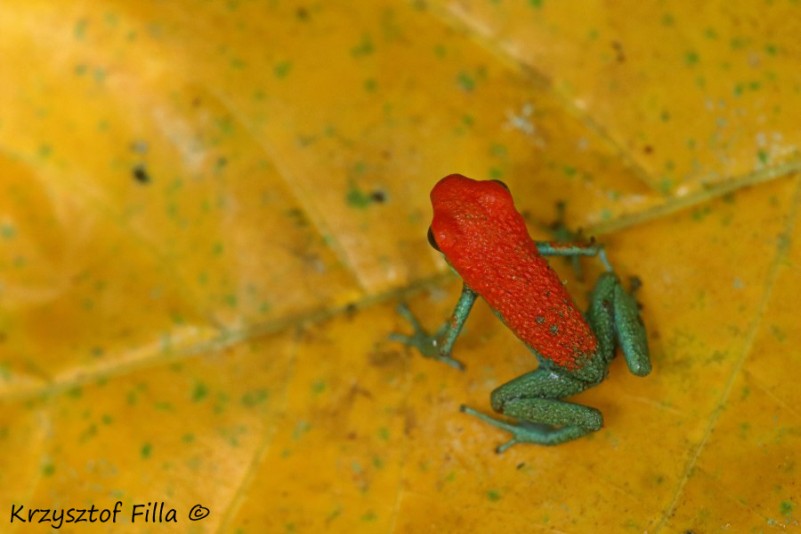
The granular poison dart frog (Oophaga granulifera) is related to the strawberry poison dart frog but is much more limited in range. It exists only in the south-west Costa Rica and in the north-west Panama. Due to the small area and declining population it is on the list of the vulnerable species. Since this frog contains poison in its skin and warning coloration unlike other frogs it is diurnal. Its size is ranging between 19 to 23 mm.
^ ^^^

The granular poison dart frog (Oophaga granulifera). These are tree climbing frogs during breeding time. They do not possess webbing between the toes on their feet so they are very poor swimmers. While photographing the frog I have cut off its way out so the only way to escape was through a very narrow brook. For an hour the frog could not cross the 20-30 cm water distance.
^ ^^^
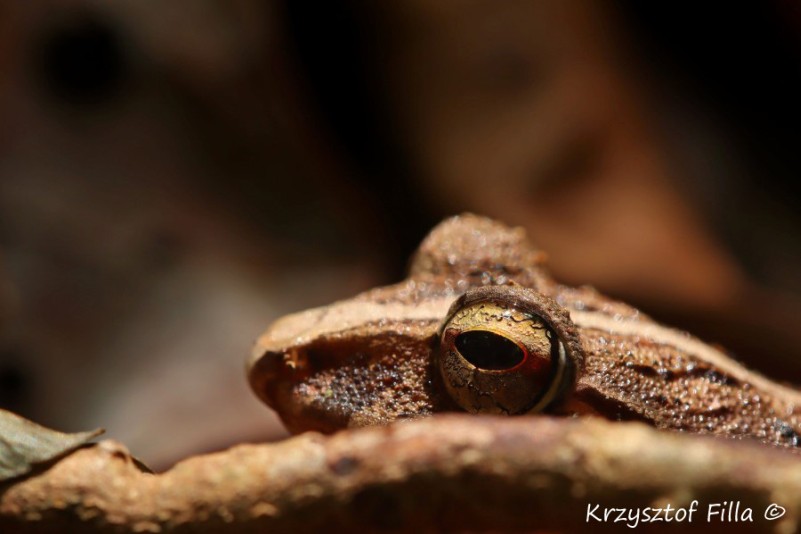
^ ^^^
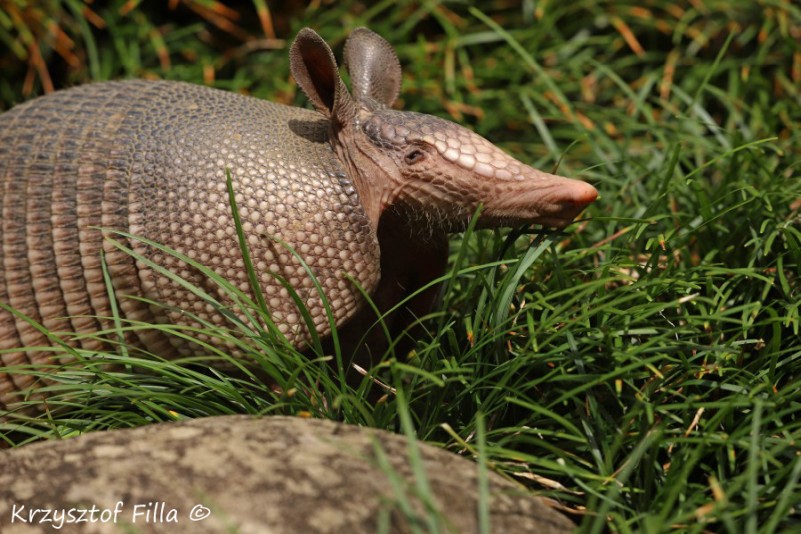
The nine-banded armadillo (Dasypus novemcinctus). There are 20 species of armadillo from the southern USA to the south Patagonia. Many of them occur locally but the nine banded armadillo is the most common and spread across Americas. They are insectivorous and nocturnal animals, digging out they feed on worms and insects during night. I have seen them in a few places but in the mountains of monteverde in Costa Rica I saw them twice during the day time. I tried to solve it and find out, their appearance during the day but non of the locals (or guides) could answer my question.
^ ^^^
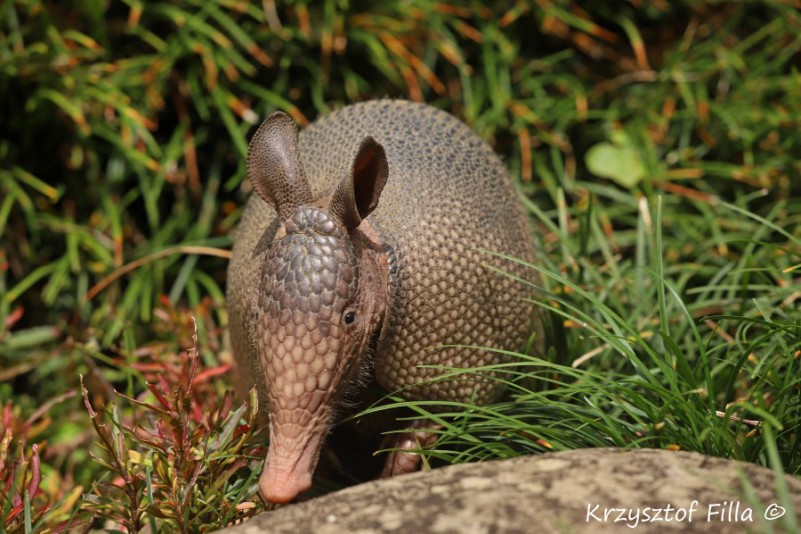
The nine-banded armadillo (Dasypus novemcinctus).
^ ^^^

The Central American agouti (Dasyprocta punctata). It is a middle size (3-4 kg.) rodent related to a guinea pig. It's a diurnal mammal living in monogamous pairs up to 20 years. It mainly forages for seeds, some leaves and shoots. It occurs from Mexico to South America. It is a vital link in seed distribution.
^ ^^^
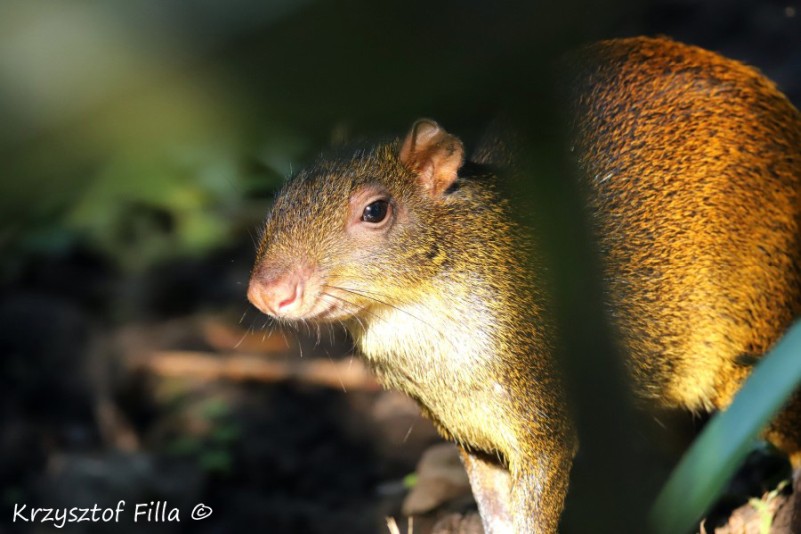
^ ^^^

^ ^^^
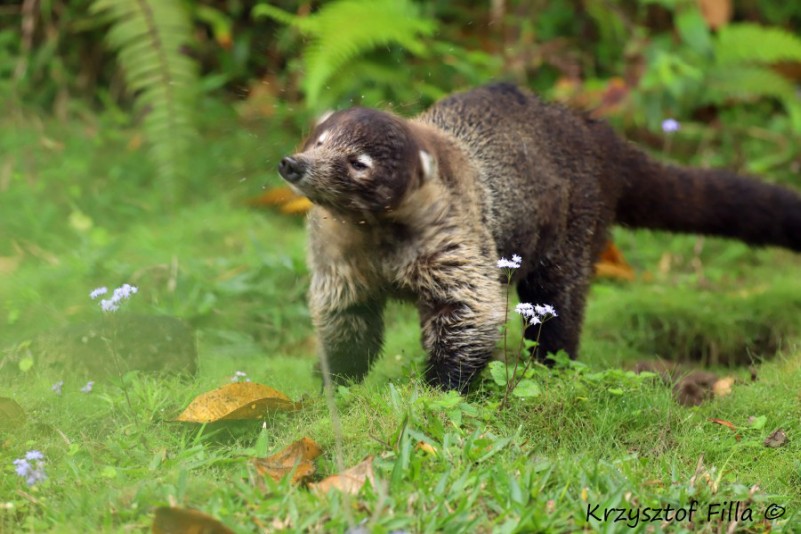
The white-nosed coati (Nasua narica). The animal is related to racoons. They live in groups up to 27 individuals. They often appear close to human settlements scavenging in dustbins for food. Old males are loners, they rejoin to the groups only during females ruts.
^ ^^^
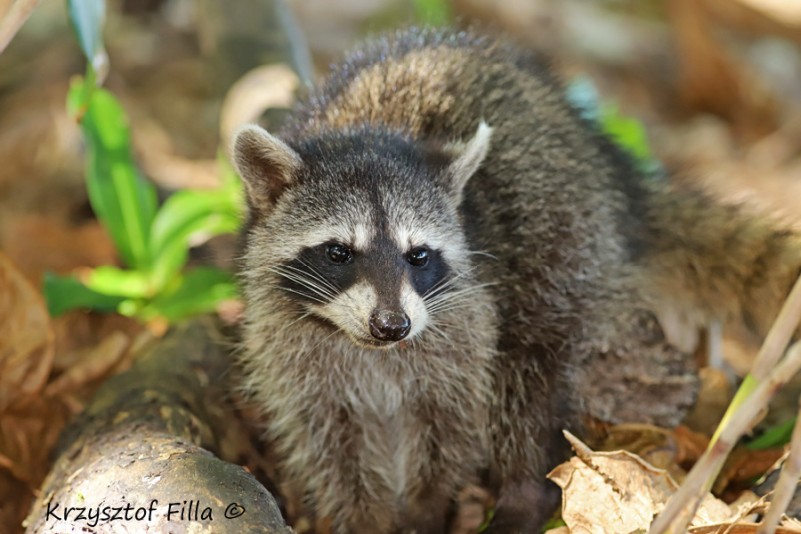
The raccoon (Procyon lotor). It is a mammal living in the North America. Its south range ends up in southern Costa Rica.
^ ^^^
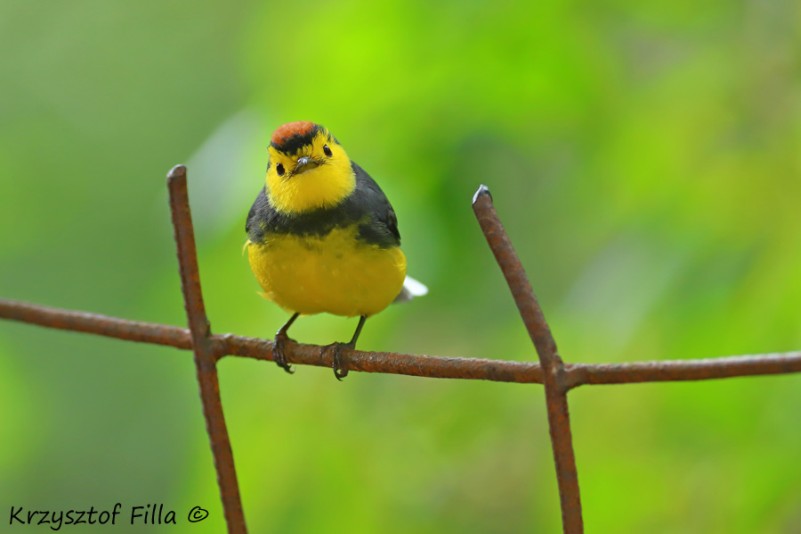
The collared whitestart (Myioborus torquatus). The little bird occupies the territoryof Costa Rica and Northern slopes of Panama above 1500 m. a.s.l.
^ ^^^
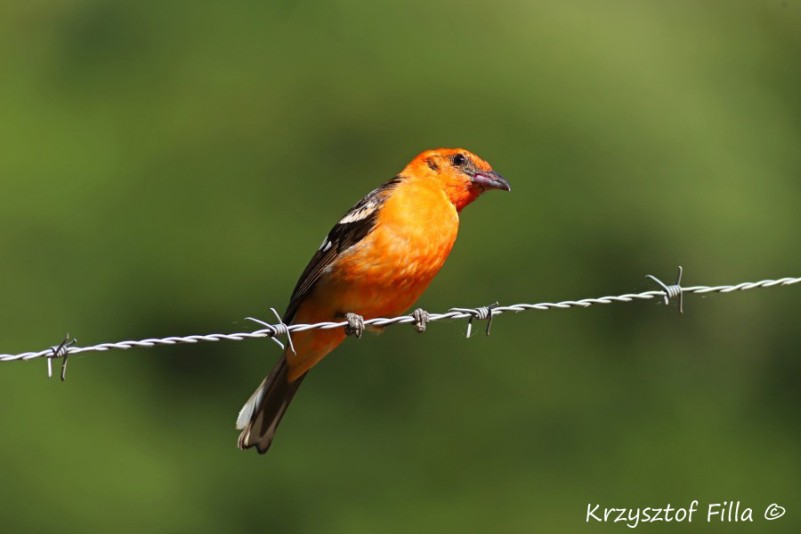
The flame-colored tanager (Piranga bidentata) The red colour indicates it is a male. Their range is from Mexico to Panama.
^ ^^^
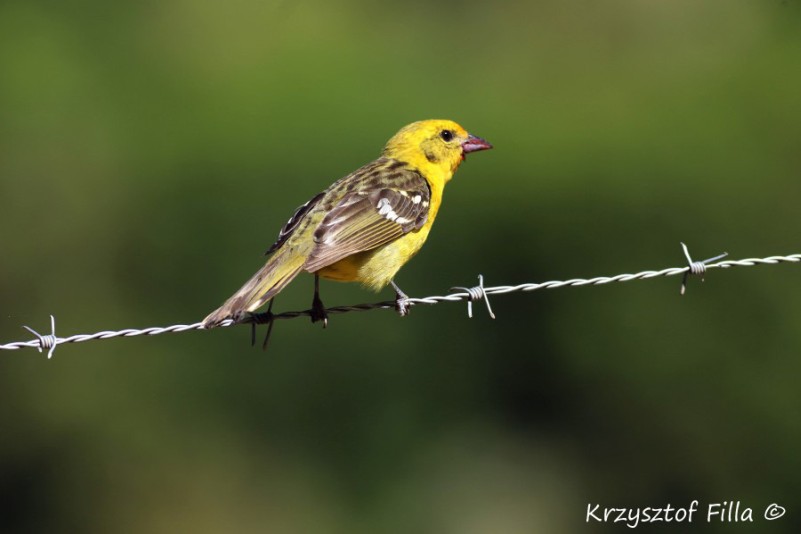
The female flame-colored tanager (Piranga bidentata).
^ ^^^

The acorn woodpecker (Melanerpes formicivorus).
^ ^^^
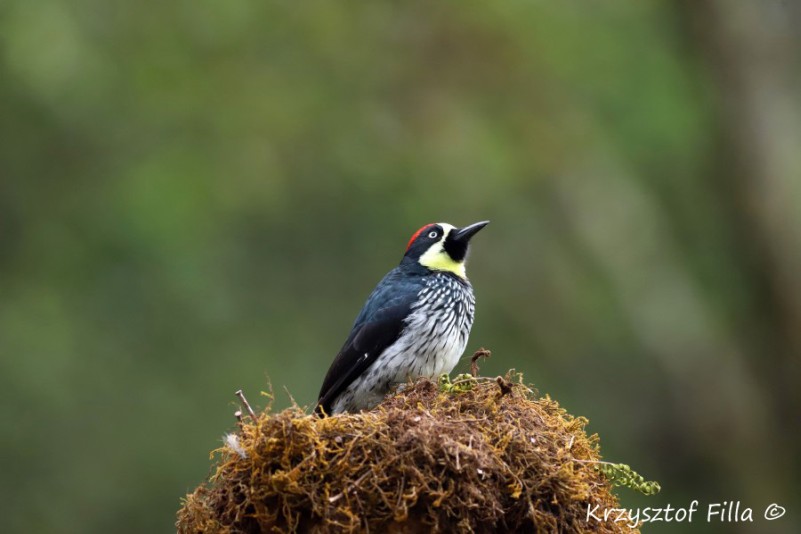
The acorn woodpecker (Melanerpes formicivorus).
^ ^^^
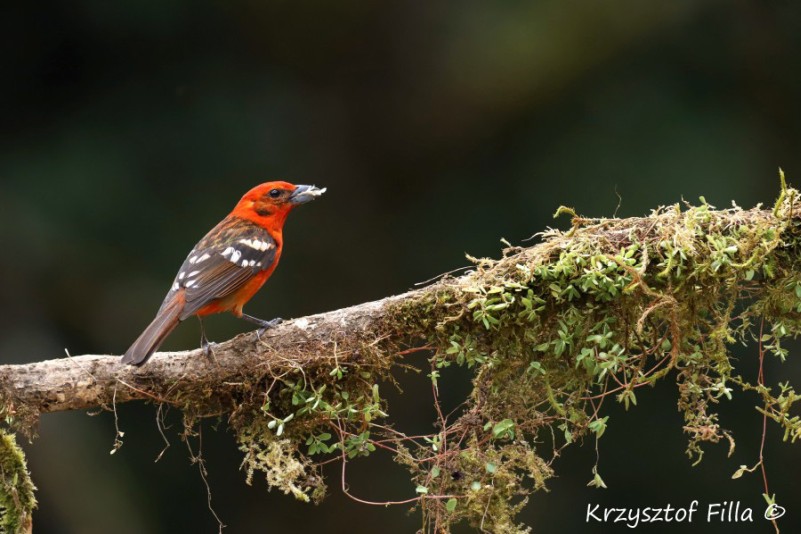
The flame-colored tanager (Piranga bidentata) male.
^ ^^^

The flame-colored tanager (Piranga bidentata) male.
^ ^^^
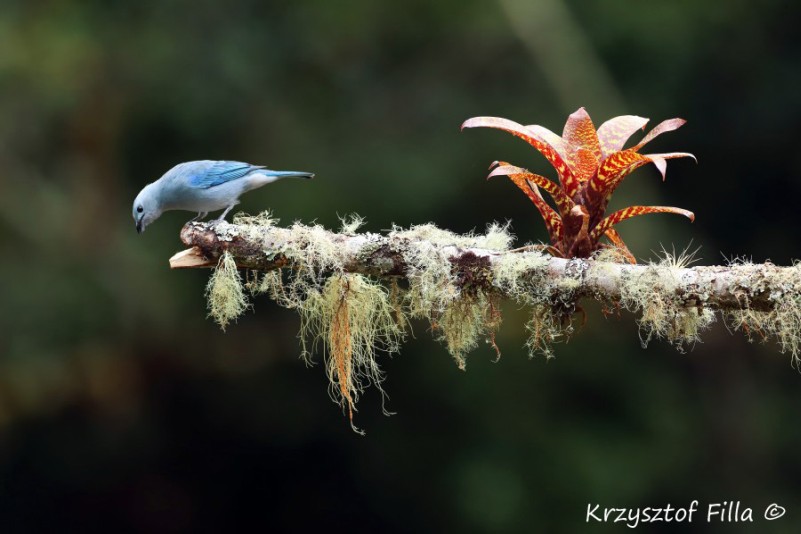
The blue-gray tanager (Thraupis episcopus) It is popular inhabitant of Central America. Often encounter at the edge of a forest or some young groves. Frequently seen in urban parks and gardens on lowland terrain but it is possible to in a mountainous areas up 2200 m. above see level. It is exactly the altitude where I have taken the the picture.
^ ^^^
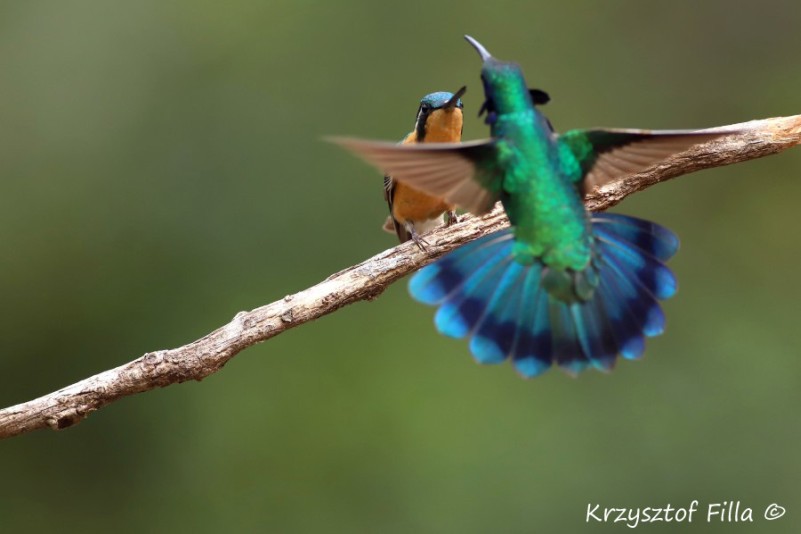
^ ^^^
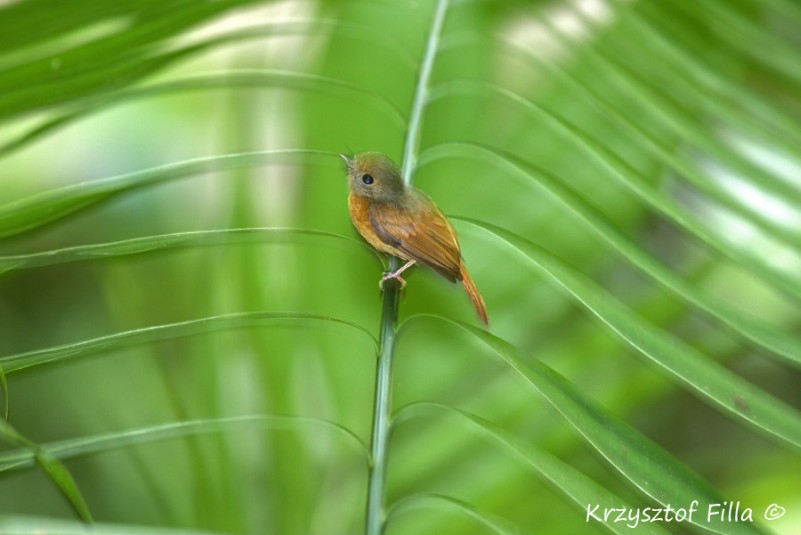
The ruddy-tailed flycatcher (Terenotriccus erythrurus). The range of the birds spreads from South Mexico to Bolivia. It likes a humid lowland.
^ ^^^
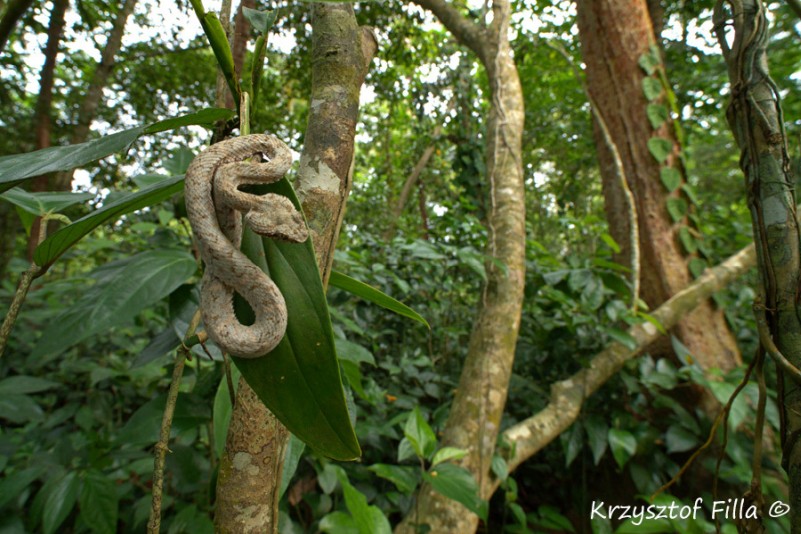
The eyelash viper (Bothriechis schlegelii), variation albino. It is a viper with strongly toxic venom. It feeds on small lizards, mice or amphibians. It is the only snake that specializes in catching small birds in flight, for example hummingbirds. Every year in Costa Rica alone about 3 to 6 people die in the result of the snake bite. The bite requires immediate medical aid.
^ ^^^

The eyelash viper (Bothriechis schlegelii). It is the same species of snake as in the previous picture but another variation. Their characteristic feature are tiny appendages over their eyes that like eyelashes.
^ ^^^
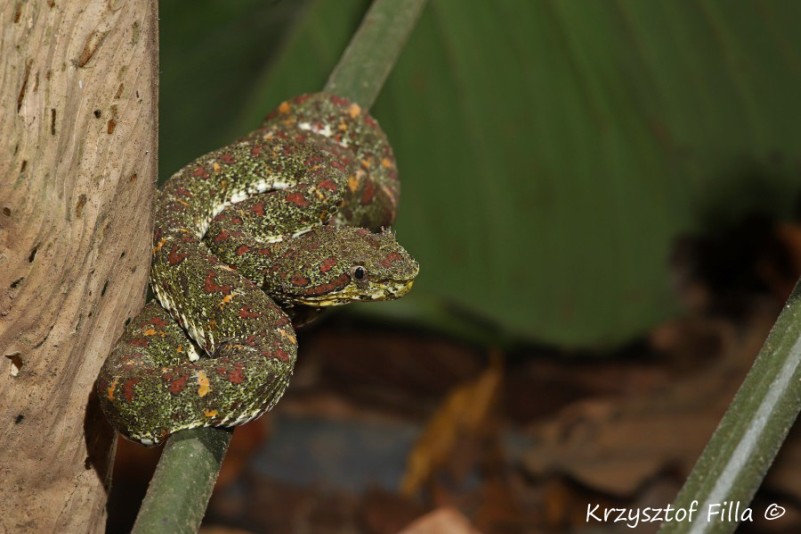
The eyelash viper (Bothriechis schlegelii). Most vipers coil in the fashion of the letter 'S' to strike a prey, once it is close enough. In this case any lizard or amphibian creeping on the opposite stick will have very poor chance to escape.
^ ^^^
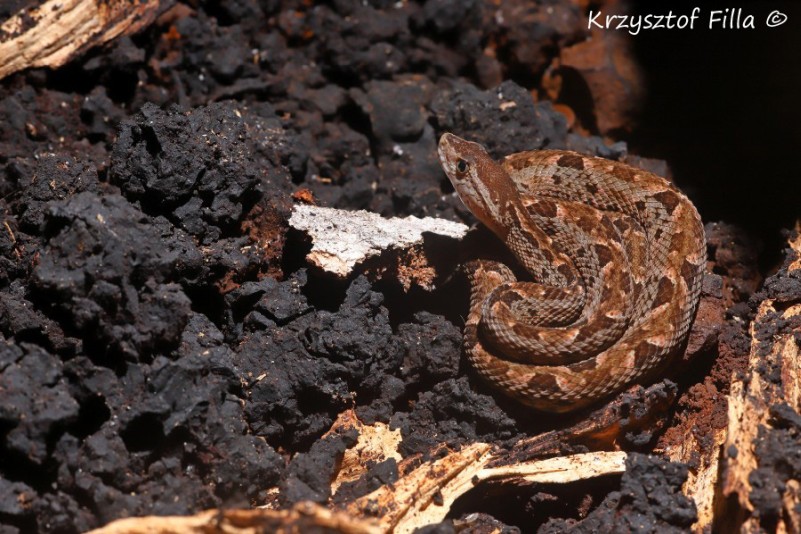
Terciopelo or well known as fer de lance (Bothrops asper). As far as the venom is concerned it is the third most dangerous land snake in the world. However, it kills the most people of all American snakes because of its inconspicuousness and lack of fear of humans. As most pit vipers it hunts at night in the vicinity of streams and dense vegetation. Under its eyes there are small pits, which are temperature receptors that are so sensitive it can detect change of temperature as little as 0.002'C The adder in the picture is a young specimen and I had a very narrow escape when I almost stepped on. It was another important lesson in the way how to move in the jungle at night time.
^ ^^^
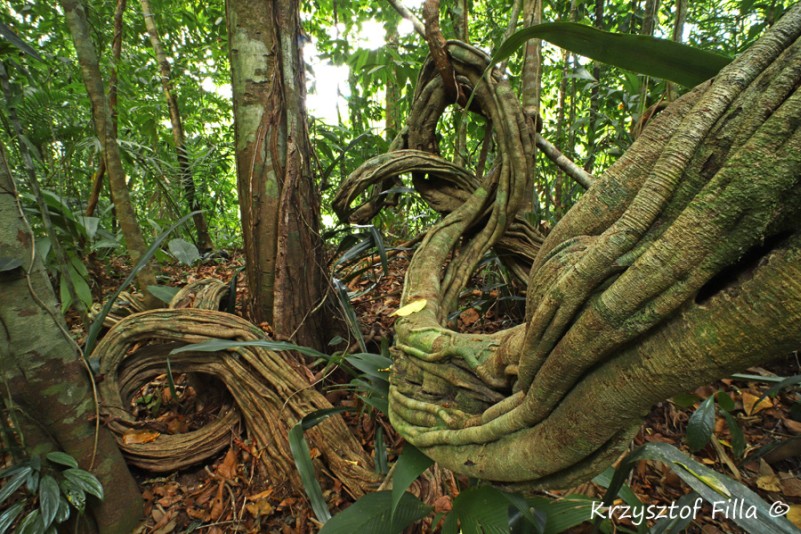
Lianas are climbing, creeping woody vines. They belong to the group of plants called epiphytes that grow on other plants. Some of them, may be as long as 1000 m. and thick as my torso. Lianas constitute a great natural walkway and bridges between the trees for many forms of animals.
^ ^^^
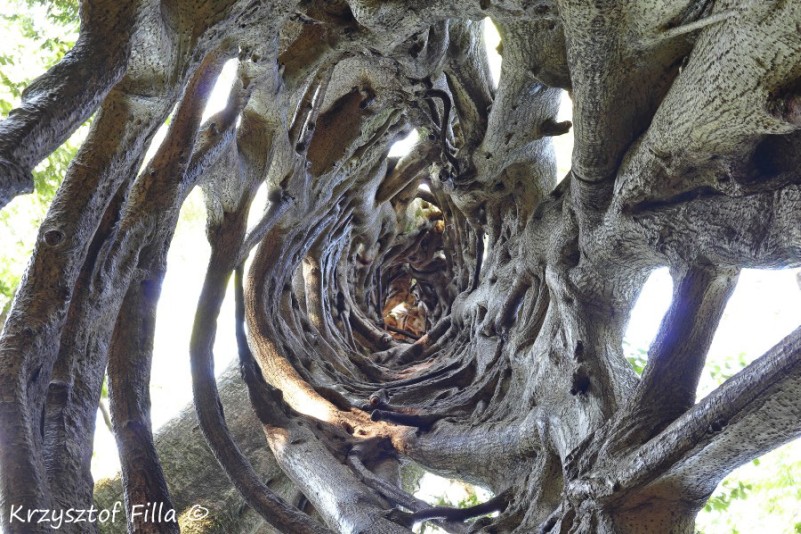
The strangler fig seed usually germinates somewhere in the canopy branches left there by a passing bird. Then it shoots down a single root along the trunk to the ground in order to find more water and nutrients. Once it establishes the connection with ground it shoots next roots which plait the host trunk and after some time it deprives it minerals and light. The host tree starts to languish and die. After years of decay, the trunk gradually vanishes and the strangler fig leaves this characteristic empty space. It serves as a shelter fore many animals.
^ ^^^
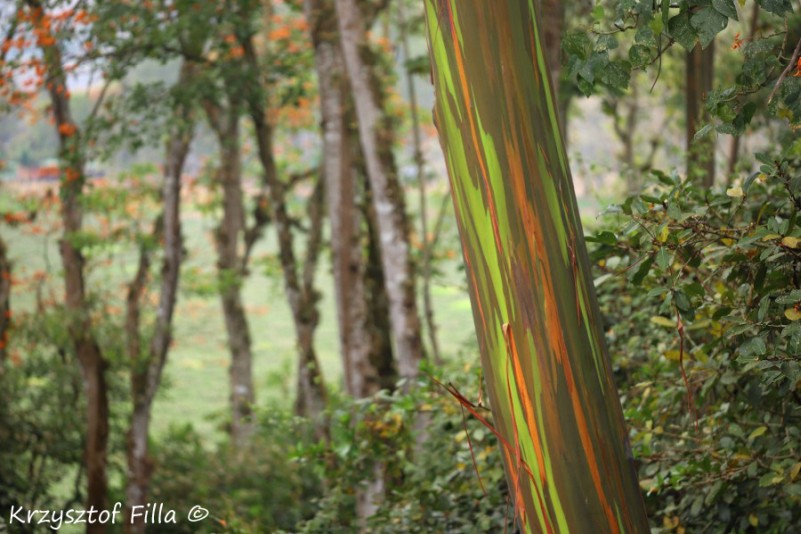
Rainbow eucalyptus.
^ ^^^
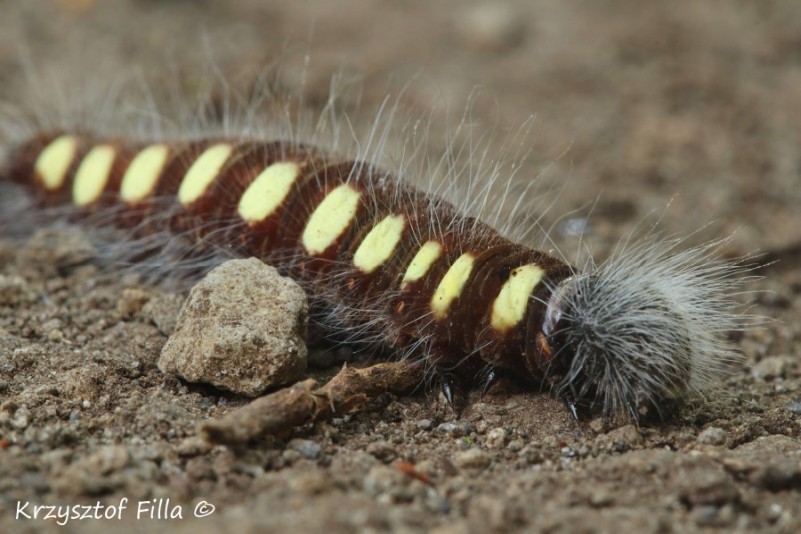
^ ^^^
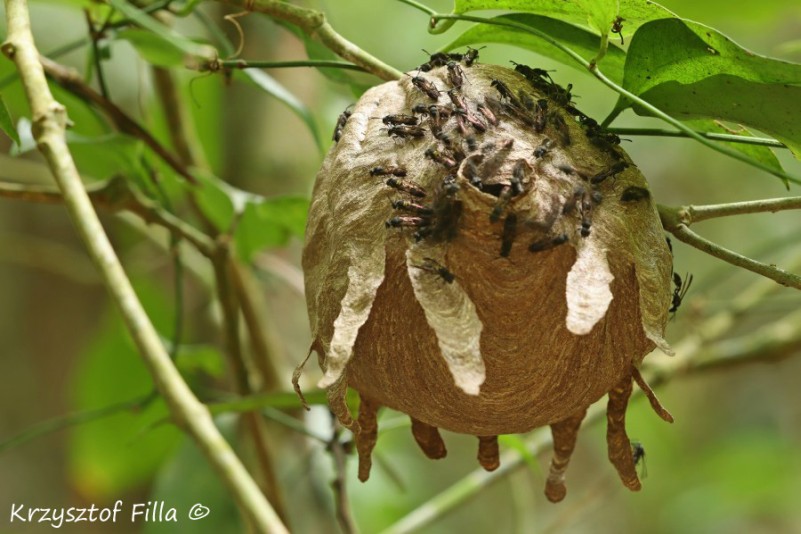
^ ^^^
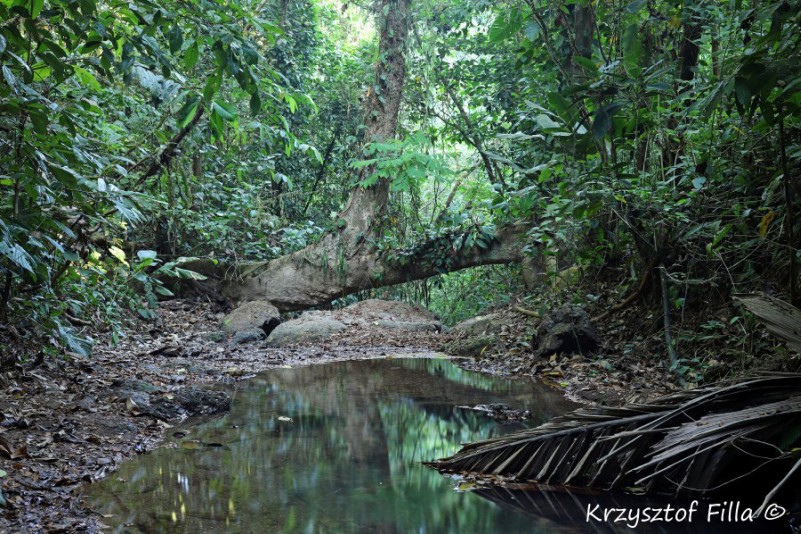
^ ^^^
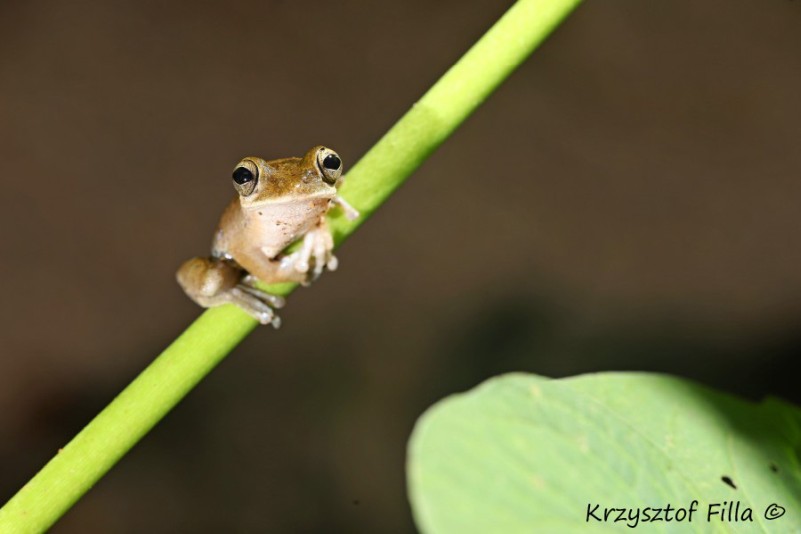
^ ^^^

^ ^^^

Keel-billed toucan (Ramphastos sulfuratus).
^ ^^^
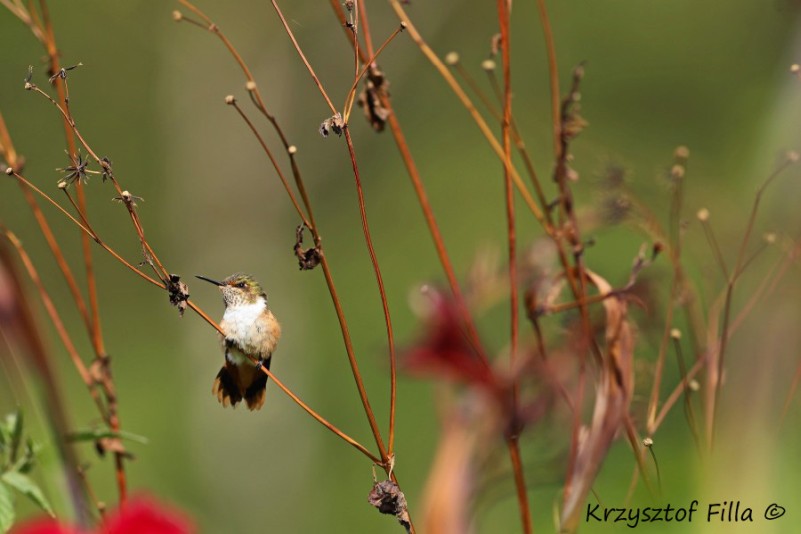
^ ^^^
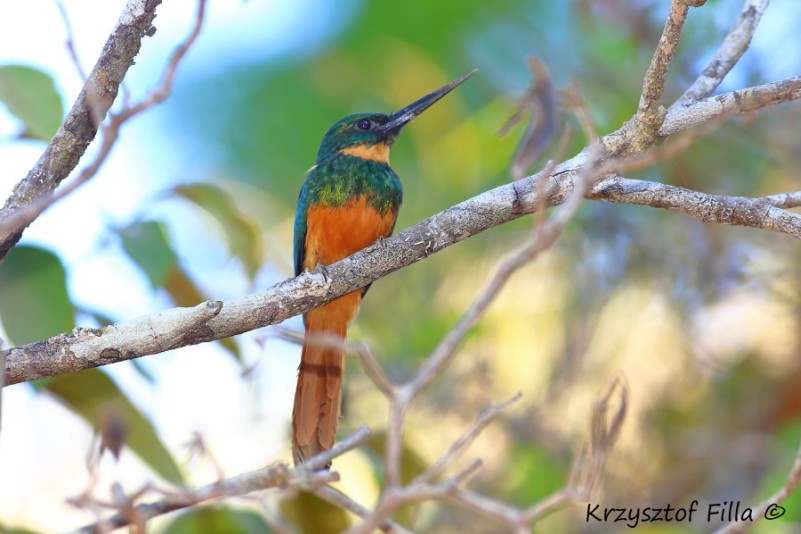
Rufous-tailed Jacamar (Galbula ruficauda). Males have white throat patch and females orange. They favor living at the frontiers between forest and clearings. Leave in Central America and some parts of South America.
^ ^^^

The common roadside hawk (rupornis magnirostris).
^ ^^^
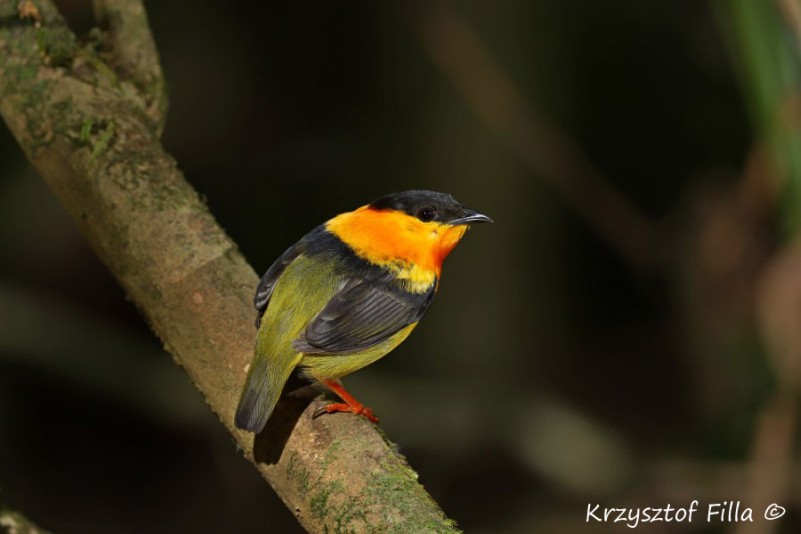
The orange-collared manakin (Manacus aurantiacus). It is an endemic bird of west Costa Rica and west Panama. The male produces very loud clicking sounds, and starts hopping from a twig to a twig to impress females. They build and maintain a display arena in thick, dim and impenetrable bushes.
^ ^^^
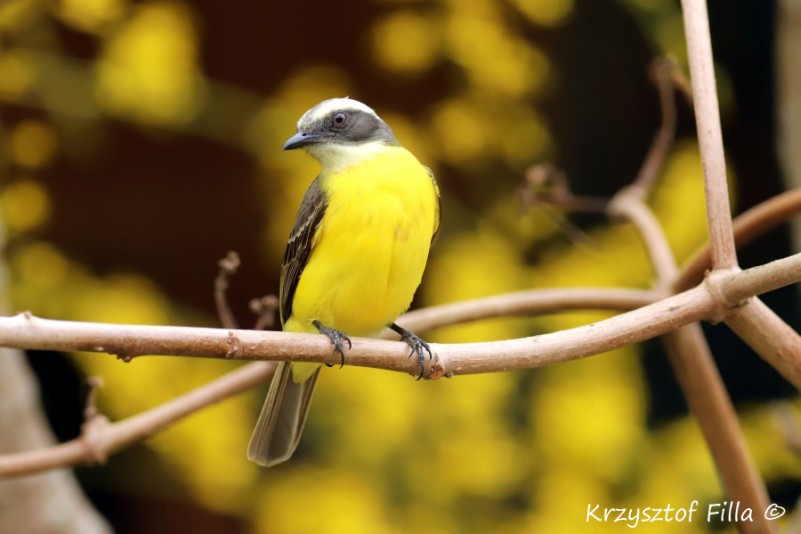
^ ^^^
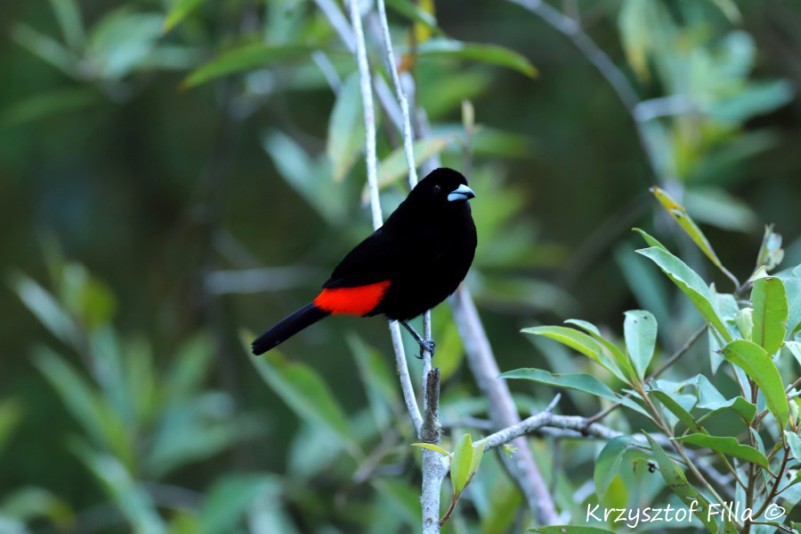
Cherrie's tanager (Ramphocelus passerinii costaricensis).
^ ^^^
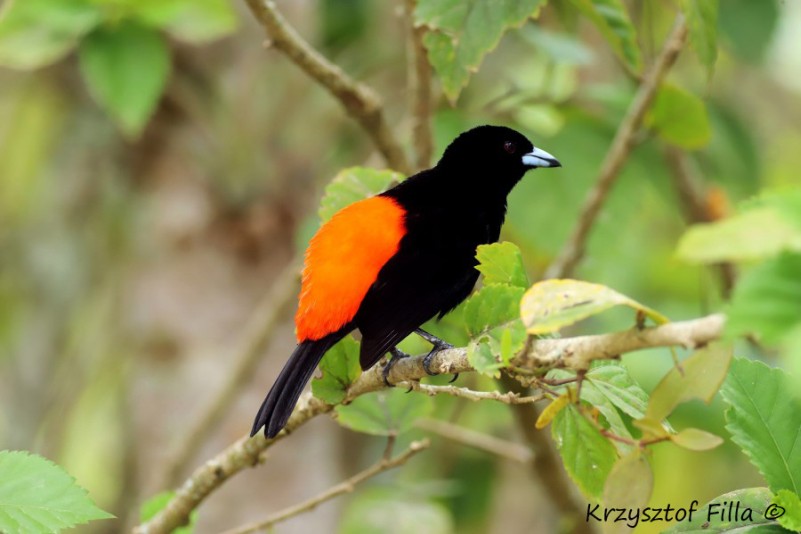
Cherrie's tanager (Ramphocelus passerinii costaricensis). The bird lives on the western pacific side of Costa Rica.
^ ^^^
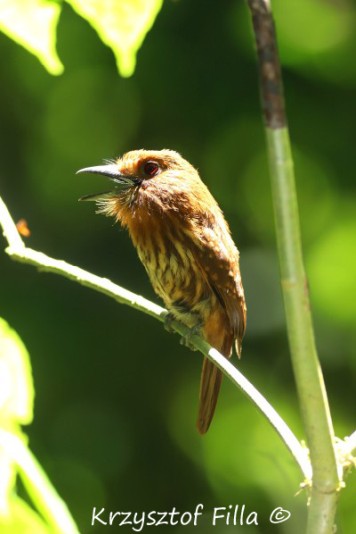
^ ^^^



















































































